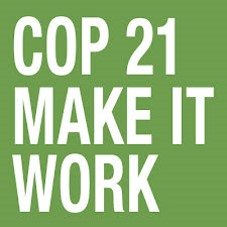

Economy
#COP21: Climate Analytics, what will it take to limit warming below 1.5°C?
Scientists at Climate Analytics have published a body of work on the feasibility of 1.5 degrees. In this section they answer what will it take to limit warming below 1.5°C? Republished with their kind permission. Read the whole body of work here.
Feasibility of limiting warming to below 1.5°C
This page outlines the scientific, technical and economic feasibility of holding warming well below 2°C, and below 1.5°C by 2100. It addresses the consequences of limited climate action to date, it discusses implications for the negotiations on a new climate agreement in Paris, and it reviews some critical mitigation options, like decarbonisation, renewables, bio-energy, carbon capture and storage, and the combination of the latter two –BECCS.
Technical background in Feasibility of limiting warming to 1.5°C and 2°C
This briefing note outlines the scientific conditions under which warming can be limited to well below 2°C over the 21st century, and return to below 1.5°C by 2100. It provides a scientific overview of the science on some critical mitigation technologies, like bioenergy, carbon capture and storage, and their combination – BECCS. It also contains counter arguments to claims that 1.5°C scenarios undermine food security through including large scale bioenergy deployment. The considerations in this briefing are based on the findings of the Fifth Assessment Report of the Intergovernmental Panel on Climate Change (IPCC AR5), the 2014 UNEPEmissions Gap Report, the Report of the UNFCCC Structured Expert Dialogue (SED), as well as the recent scientific literature.
1.5°C risks and feasibility – key points
This fact sheet provides key points on risks to ecosystems, food security and sustainable development associated with 1.5°C warming. It also provides responses to arguments commonly made against 1.5°C and provides the scientific evidence for each point made.
Is it possible to return warming to below 1.5˚C within this century?
This briefing comments on the feasibility of holding warming below 1.5°C within this century and provides information on selected climate risks at 1.5°C, 2°C and 4°C warming.
The CAT emissions gap – How close are INDCs to 2 and 1.5°C pathways?
This web web page on the Climate Action Tracker (CAT) website, and the documents provided therein, show the levels of warming associated with submitted INDCs and provides an assessment of the resulting gap to meet the 1.5°C or 2°C goal.
This webpage on the Climate Action Tracker (CAT) website, and the documents provided therein, show the levels of warming associated with submitted INDCs and provides an assessment of the resulting gap to meet the 1.5°C or 2°C goal.
External resources:
What would it take to limit climate change to 1.5°C?
This link will take you to the press release of the International Institute for Applied Systems Analysis´ (IIASA) on the publication “Energy system transformations for limiting end-of-century warming to below 1.5°C” by Rogelj et al. in Nature Climate Change.


 Environment10 months ago
Environment10 months agoAre Polymer Banknotes: an Eco-Friendly Trend or a Groundswell?

 Environment11 months ago
Environment11 months agoEco-Friendly Home Improvements: Top 7 Upgrades for 2025

 Features9 months ago
Features9 months agoEco-Friendly Cryptocurrencies: Sustainable Investment Choices

 Features10 months ago
Features10 months agoEco-Friendly Crypto Traders Must Find the Right Exchange






























